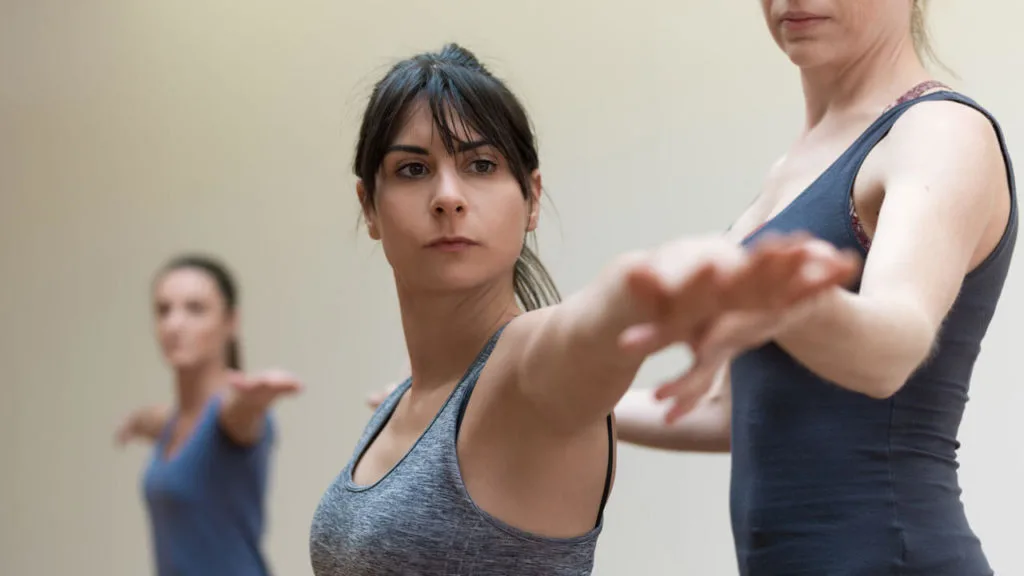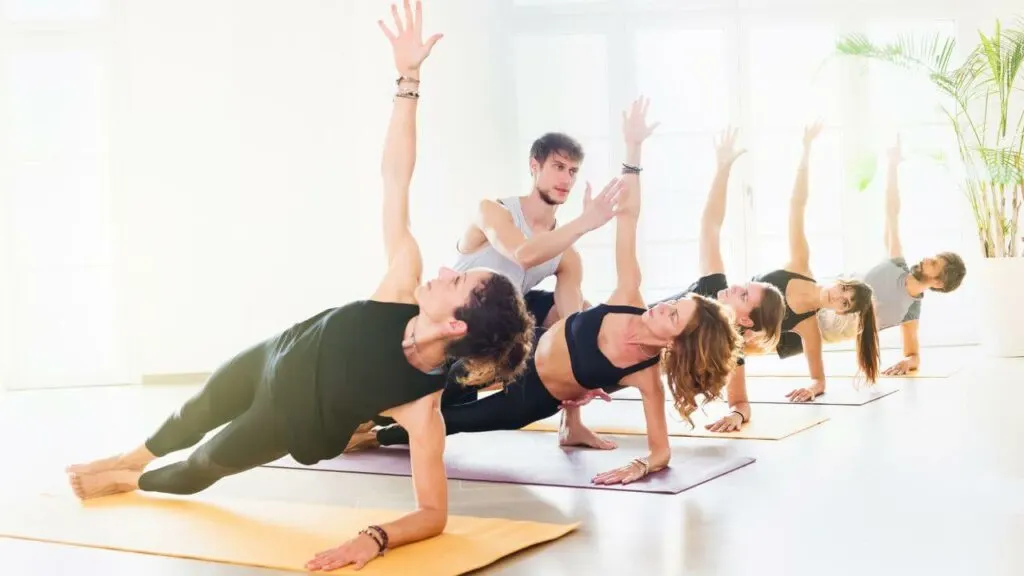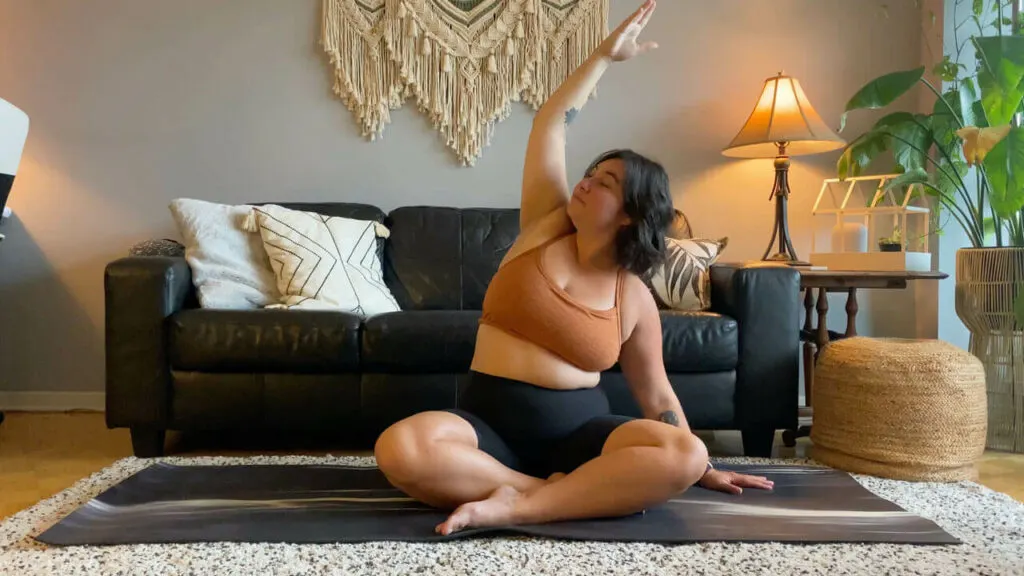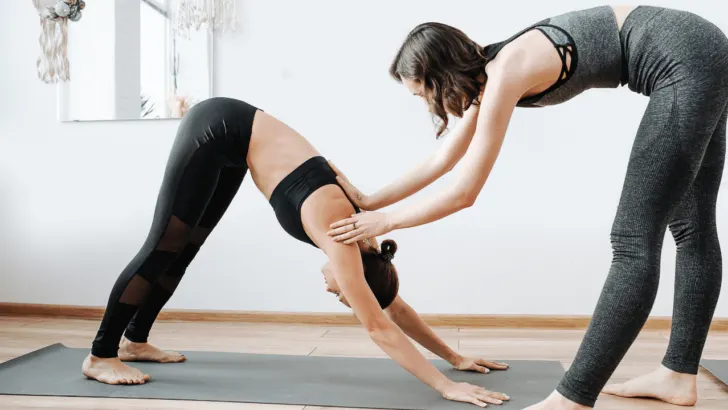Hey new yoga teacher! I was once in your shoes and am all too familiar with the nerves, unease, and questioning that comes with being a new yoga instructor. I know from first-hand experience just how intimidating it can be to get up in front of a classroom full of students or to press record on the camera. Becoming a yoga teacher is a path that challenges you, strengthens you, and uplifts you.
Take this into account before you start judging yourself and your teaching: A study reported by the International Journal of Yoga found interesting results when a survey showed that yoga students claimed that the experience or level of a yoga teacher has less effect on the students’ benefits than other considerations. This is compared to the level of the student, how often they practice, and when they practice has a greater effect.
This means that being a new yoga teacher or your experience is not nearly as important as the responsibility that your students have to their own practice. I point this out to demonstrate that you don’t have to be experienced, perfect, or know it all!
Your confidence as a yoga teacher is a skill that will help calm your students, skyrocket your own positive beliefs, and diminish self-doubt. With these simple and practical tips, you will be able to not only teach confidently but also give your students a truly exceptional yoga experience.
How to Be a More Confident Yoga Teacher

These are my tried and true methods during my first three years as a yoga teacher.
1. Teach the Same Sequences Again…And Again
You may think that students know when you’re teaching the same sequence to them, but the reality is that they have no clue. Think back to if you’ve ever noticed a teacher teaching the same sequence. Personally, I’ve never noticed. Not once!
It’s not even about whether your students can tell if you’re teaching the same sequence. Students need repetition. They’ll notice their growth more in their own practice if they do the same sequence, practice the same poses, and be given a chance to get “good” at yoga.
When you teach the same sequence or a few sequences you also get the opportunity to grow your confidence, to refine your cueing, and make adjustments to the class and your speaking as you notice what your students are getting or not getting. It’s a win-win for you and your students.
2. Keep Your Notes Close By
I thought that the best yoga teachers have their sequences memorized. Many do, but not all. I’ve been teaching yoga for a few years now and I still keep my notes app open on my phone beside my mat. At home where I film my YouTube yoga sequences I get through my sequences no problem without notes. But when teaching in the studio I am all too familiar with the doubt and anxiety that can arise when a room full of eyes are on you.
Keeping my notes close by is a backup and a reminder to myself should I need it. Never be ashamed of needing your notes. In some classes you may not even glance at your written sequence, other times you may refer to it often. Yoga teachers have off days and it’s not unheard of for you to occasionally forget even your most practiced sequences.
Don’t fret about your students seeing you touch your phone. They don’t care! They’re too busy focusing on what’s going on in their own internal world. Looking at your phone or notes does not determine how good or bad of a yoga teacher you are. Do what you need to teach the best class you can.
3. Teach What You Know (And What You Preach)
Before I became a yoga teacher I went to college for film school. I had a screenwriting teacher who gave me a piece of advice that I carry with me to this day, and I’m passing on this knowledge to you. “Write what you know,” she preached at nearly every lecture. Today this easily translates into my yoga career as teach what you know. When your sequencing, cues, and inspiration come from you and your practice it will come across so much more easily and genuinely to your students.
Forget trying to teach the same sequence as your favourite yoga teacher or memorizing someone else’s cues. Teach what comes naturally to you and your students will love you for an exceptionally authentic class.
That being said, if you love a cue that another teacher says and it sticks with you, use it! It stuck with you for a reason and if it helps your practice, it’s bound to help some of your students too.
On the topic of preaching…you’ve also got to teach what you preach. I am very mindful of how daunting yoga can be for those in larger bodies as it was something I experienced too early in my yoga journey. I take this message and teach it as themes in my own classes, constantly reminding students to do what feels safe and comfortable for their bodies. I know this so well from my own experience that it’s easy for students to feel the importance of it too.
4. Master the Basics

So many new yoga teachers, myself included, have grand ideas of the types of sequences that we want to teach. We think our personal yoga practice will translate effortlessly into something that we can teach our students, but that’s often not the case!
It’s easy to overcomplicate your sequences and make them more of a choreography or a dance than a yoga sequence. But don’t forget that many of your students are beginners who need the simplicity of yoga basics or “advanced” practitioners who need the reminder to approach yoga with a beginner’s mind. Teaching traditional Sun A multiple times is good for everyone. Going slowly is great for all levels of students.
No matter your teaching expertise, being able to teach the basics is a skill that both you and your students can benefit from while you gain your confidence on the mat at the front.
5. Make Mistakes
Make mistakes yes, but also be able to laugh about it. There will be countless times that you tell students to step their right foot forward instead of their left and wonder how you ended up with a different foot forward than the rest of the class.
Your students will not hate you if you make a mistake or if your sequences aren’t smooth. Anytime I make a mistake I usually call myself out in front of the class. “Did I say the right foot? I meant the left,” I’ve said countless times as I laughed. And more times than not your students will laugh with you.
That’s the case with an obvious mistake. But if you forget Warrior II on one side you can always add it later into the sequence. Or if you forget a pose or part of the sequence altogether, the best part is that your students have no idea! It’s you who gets to learn from your mistakes. I promise very few or none of your students will ever judge you.
Crave more knowledge? Take a look at the 300-hour advanced yoga teacher training I recommend.
6. Keep Up Your Personal Practice

I know that this is preached in yoga teacher training and ingrained in our minds, yet it’s still common for yoga teachers to not make time to be the yoga student. Making time for, evolving, and deepening your personal practice is something I work on with my private yoga and coaching students.
Keeping up your practice is a practice. It’s an act of self care (Svadhyaya) and one that will help you remember what it’s like to be in your students’ shoes, find inspiration for your sequences, and be able to show up to class as your most radiant, confident self.
7. Watch and Talk to Your Students
The biggest mistake I made when I first started teaching was demoing for too long. At first, it was a good idea, but I kept myself from really supporting my students by not watching them. As someone who taught on YouTube first, I was so used to demonstrating an entire sequence for the camera. But the key to becoming a more confident yoga teacher lies in seeing what cues your students are picking up, what’s confusing to them, and how cues are landing in their bodies.
But just watching isn’t enough. Encourage your students to talk to you after class. Go up to your students and ask what felt great, and what didn’t. Positive and negative feedback will help boost your self-esteem and help you deliver an exceptional and transformative class to your students.
8. Film Yourself & Practice Your Classes
You know what you’re trying to achieve in your classes. Do you want to guide students into opening a certain area of the body? Are you after a peak pose? Is there a specific theme you’re trying to convey? Recording and practicing your own classes will make it crystal clear if your goal for your sequence is landing. Of course, that doesn’t mean it will land for your students, but if you notice that it doesn’t for you it won’t for your students.
Practice your own sequences and listen to notice where you can refine your cues, offer different ones, or change the sequence to make it more accessible or direct.
What’s next?
- I encourage you to begin practicing two of these tips this week!
- Want support and guidance in your teaching journey? Book a private yoga and coaching call with me to skyrocket your confidence as an instructor.
- Need ideas for practices? YouTube is an excellent place to find themes, learn from multiple teachers, or even upload your own sequences!

